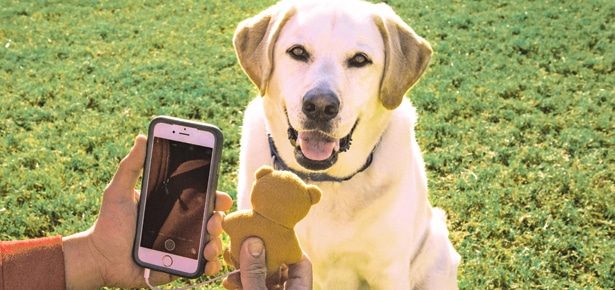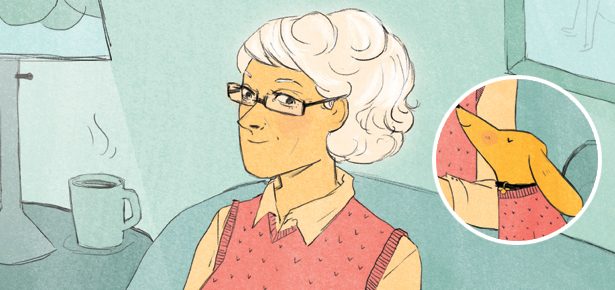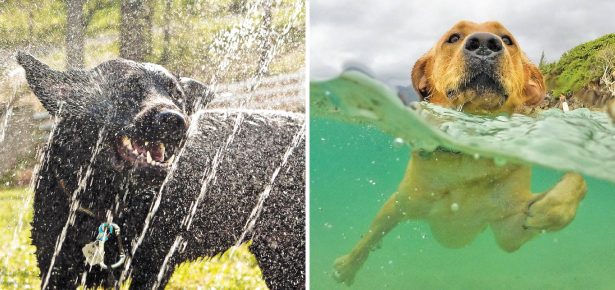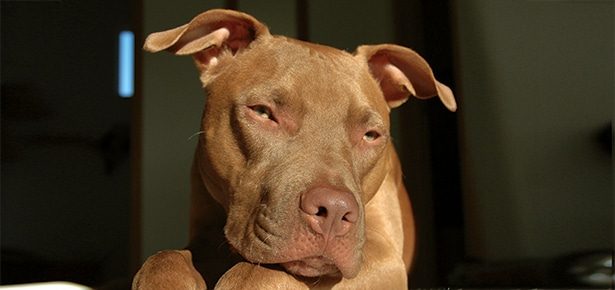
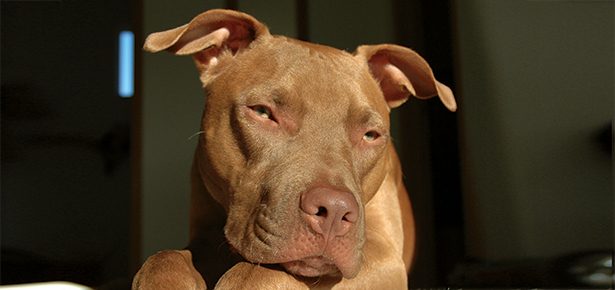
Devil Dogs
Would the real devil please stand up?
In medieval times, what Christians thought of as the Devil had animal characteristics. Often he was pictured with the head and horns of a goat. Today, if the media are to be believed, the Devil is still an animal – only now he has the broad muzzle, muscular jaws and cropped ears of a dog.
The negative image of Pit Bulls is partly of biased and sensationalized news reports, but it is reinforced in popular culture. It has become almost a cliché to see slavering Pit Bulls straining against heavy chains, or snapping and growling from the far sides of chain-link fences as they guard the homes of their gun-wielding, drug-dealing, low-life masters. The dogs also frequently appear in hip-hop videos, ears cut to look like devil horns, snarling from the back seats of high-powered SUVs, providing visual accompaniment to the anti-establishment “gangsta” rap music.
Media reports will assure you that there is a historical reason why Pit Bulls are supposedly evil and dangerous. Their very name derives from the fact that in Elizabethan England they were often required to fight bulls in circular arenas (or “pits"), while bets were laid on the outcome. This was probably quite the spectacle, and it became a major attraction at fairs and other gatherings. Crowds would gather to gawk at the bravery and skill of certain dogs, not to mention the bloody prospect of at least one animal dying in agony. It was a dangerous sport, and dogs were obviously bred or selected for having a certain tough and tenacious quality. These were characteristics recognized and admired by many aficionados of the “sport,” with some dogs becoming as widely renowned as many professional athletes are today.
When bull baiting was outlawed by the English Parliament in 1835, fans of blood sports then found new opponents for their tough little “bulldogs” to contest, namely other dogs. Dog fights used the same pit arenas of old, and again, crowds would gather and bets would be placed. Dog breeds were not as carefully defined then as they are now – and certainly not among the social classes most strongly associated with pit fighting, where performance in this form of entertainment was an animal very similar in appearance to what we now think of as the Pit Bull.
In the media today, the term Pit Bull is used to refer to a number of different breeds with broad, square faces and strong jaws, including the American Staffordshire Terrier, American Pit Bull Terrier, Staffordshire Bull Terrier and American Bulldog. The name is often also used to refer to crossbreeds of similar characteristics. Sometimes the label gets a bit blurred, and virtually any dog that is involved in a biting incident becomes a “suspected Pit Bull or Pit Bull cross.” I saw this happen in one case where a local newspaper reported that a young girl had been bitten by a “Pit Bull,” while TV footage showed a dog that looked like some sort of wolf-Collie cross. When I pointed this out to the paper’s editor, his response was, “As far as I’m concerned, any dog that would maul a little girl like that is a Pit Bull.”
Defenders of Pit Bull-type dogs offer historical reasons why their breeds are not dangerous to people. They note that during the era of legal dog fights to the “perfect” fighting dog had to be aggressive toward other dogs, but not to people. This was because the dogs required extensive handling by their owners and other humans (notably, the opposing dogs’ handlers) prior to and during their fights. Also, since most fighting-dog handlers were working-class folk who kept their dogs in their family homes, aggression toward people was not tolerated. Any dog that bit humans was usually put down, and as a result Pit Bulls were long known as good and reliable family pets.
This was certainly the case through the first half of the twentieth century, when Pit Bulls were considered to be fun-loving, family dogs. Many people fondly remember Petey, the loveable comic dog with the ring painted around one eye in the Little Rascals and Our Gang movies. Petey was an American Pit Bull Terrier – as was Nipper, the dog on the RCA Victor logo, shown listening to his master’s voice. Many playful photos of the time show celebrities such as Fred Astaire, Helen Keller and Theodore Roosevelt hugging, petting or smiling beside their Pit Bull pets.
Breeds of dogs go in and out of favour, much like styles of clothing. The reasons are often the same: association with prominent people or groups. Britney Spears and other pop divas bare their midriffs and soon virtually all young women who can get away with it (and even some who can’t) follow the trend. Dog breeds can receive similar exposure; thus, the release of the live-action film 101 Dalmatians saw an enormous rise in the popularity of Dalmatians across North America. (By one estimate, over ten thousand unwanted Dalmatians were turned over to Southern California-area shelters in 1999). Parson Russell Terriers (formerly Jack Russells) have surged in popularity because of TV dogs Eddie (on Frasier) and Wishbone (on the children’s show of the same name).
Dog breeds can just as easily have their reputations downgraded through guilt by association. The media’s choice for “devil dog” of the 1930s was the Chow Chow; anything Chinese was then seen as a part of the corrupting opium trade. In the 1940s it was the German Shepherd, tagged as a symbol of Nazi Germany. Later on, a series of films about bloodthirsty Doberman Pinschers (such as They Only Kill Their Masters) resulted in that breed being labelled by the media as ferocious. This natural led to the Doberman becoming the tough guy’s dog of choice in the 1970s.
Then, in the 1980s there were several widely publicized cases in which people were badly mauled by Pit Bulls. When it was later discovered that the dogs’ owners had previously been subject to police scrutiny for illegal activities, the Pit Bull suddenly entered the Satanic Bestiary of Dangerous Dogs. The image was reinforced by rap artists like DMX and Outkast’s Big Boi using images of the dogs as status symbols to demonstrate how mean and tough they were. As rapper Ice-T proclaimed, “Got a dope Pit Bull named Felony.” The meaner and more aggressive-seeming the dog, the more effective the prop for a hip-hop singer and his posse.
The result has been political pressure in many venues to ban Pit Bulls as a matter of public safety. The dogs are often described these days by politicians and media pundits in terms like ticking time bombs that sooner or later will kill you – or your child.
How justified are such claims? But before I answer that, I think that there is a larger issue to be addressed. Just how big a threat are dog bites taken in their totality, without any regard for the breeds involved.
Gathering statistics on dog bites is difficult. Many bites are innocuous, such as those that result from an over-eager dog taking a chunk out of a thumb when offered a treat. Others are more severe but are treated at home. Of those bites that are actually presented for medical treatment, many do not end up in any accessible data bank and are thus lost to researchers. Even when bites are recorded, there is often no information on whether the bite resulted in minor or major damage, or any credible assessment of the breed of dog involved.
Fortunately, a study commissioned by the U.S. Nation Center for Injury Prevention and Control, published in 2000, does provide some information. The study was based upon the one class of dog bites legally required to be registered, namely those resulting in death. It spanned a period of 19 years and found that there were 238 dog-bite-related deaths during that time – an average of 12 per year.
Compared to the possibility of succumbing to a dog bite, you are nearly 8 times more likely to die by being struck by lightning (90 deaths per year), 26 times more likely to die by drowning in your bathtub (322 per year), 49 times more likely to die by drowning in a swimming pool (596 per year), and 66 times more likely to die when using your bicycle (795 per year). Apparently dog bites are rather low on the list of common hazards.
Why, then, the media frenzy about “dangerous dogs”? A professor I know who teaches journalism (but doesn’t want his name to be mentioned) explained it to me this way: “Good news doesn’t sell. Do you think the headline ‘Dog makes owner smile and feel good’ would sell papers? The rule that we teach aspiring journalists is ‘If it bleeds, it leads,’ and nowadays we add the reminder that ‘dogs don’t sue for defamation.’”
Scientific data indicate that dog breed is not the best predictor for biting. For one this, sex is important. Male dogs are 6 times more likely to bite humans than female dogs are, and sexually intact dogs are 2.6 more likely to be involved in attacks than are neutered dogs.
Who the victim is and how he or she behaves often plays an important role. In 53% of all the fatalities in the study, there was some suggestion that the dog was provoked by being struck or poked in the face, having things thrown at him, or otherwise being subjected to human aggression. Sadly, more than half of the dog-bite victims are children aged 12 or younger. It is encouraging, however, to note that a one-hour class on “bite proofing” has been shown to reduce by over 80% the likelihood that a child will be bitten by a dog.
The behavior of the dogs’ owns is critically important. Dogs kept chained or confined in small yards are approximately 3 times more likely to fatally bite people. Another important statistic is that dogs that receive obedience training – even a simple beginner’s class where people stand around in a circle and the instructor demonstrates how to get Rover to sit, come, or lie down – show a nearly 90% reduction in the likelihood of such biting incidents.
That is not to say that the breed of dog is irrelevant. I have not yet heard of a pack of Golden Retrievers tearing a person apart. The statistics indicate that the dogs most commonly reported as involved in bite incidents are Pit Bulls (including “Pit Bull types” and crosses), Rottweilers (and crosses). Nordic breeds (Malamute or Husky types) and wolf-dog hybrids. But far more important than breed, I believe, is breeding. There still exists a flourishing underground dog-fighting circuit demanding aggressive dogs. Many people misguidedly want vicious dogs to boost their ego, establish a tough image, or protect premises that might potentially attract thieves or home invasions. (It is interesting to note that Diane Jessup, founder of workingpitbull.com, says that Pit Bulls make “Lousy guard dogs,” and uses other breeds to guard her kennel.)
Not surprisingly, there are more than enough breeders willing to supply Pit Bull-style dogs to suit the demand. Enter “game bred” and “dogs” into your Internet search engine and see for yourself. Certainly the names that some breeders use for their kennels, incorporating words like “combat,” “menace,” “ferocious,” “macho,” or “rampage,” do not suggest that these establishments are trying to attract buyers seeking fun-loving, friendly house dogs. Obviously some breeders – often those that advertise dogs that “will not back down,” “will stand up in any fight,” or “can put down anything or anyone in their way” – are deliberately trying to sell to people that apparently want “lethal canine weapons” rather than affable family dogs.
If anything, the existence of such breeders – combined with the desire of some segments of society to own “the meanest, baddest dog” in town – shows why legislation banning specific breeds will never work in the long run. In 1990 the City of Winnipeg banned Pit Bulls, and as a result, Pit Bull attacks decreased significantly. However, the number of attacks by Rottweilers increased. Aileen White of the Winnipeg Humane Society says, “We’re now seeing South American breeds coming in that are really vicious.” In other words, when one “devil dog” breed is banned, the people who crave vicious, ferocious, dangerous dogs will just turn to another.
Dogs are so generically plastic that literally any breed can be made “vicious” through dedicated breeding. Legislation that bans specific breeds simply will not be able to keep up, and could result in successive targeting of one breed of dog after another until everything larger than a Miniature Poodle is forbidden. (A badly handled Miniature Poodle might well be vicious, but is unlikely to cause whole neighbourhoods to quake with fear. Obviously the title “devil dog” will not long remain vacant as long as there are people who want dogs to serve as symbols of power and threat, and there are unscrupulous breeders willing to provide them with the “biological equivalent of a loaded weapon.”
Dr. Stanley Coren is professor of psychology at the University of British Columbia, host of the TV show Good Dog! and author of several books on dog behavior, including How to Speak Dog and, most recently, How Dogs Think. His website is www.stanleycoren.com
Join the newsletter and never miss out on dog content again!
"*" indicates required fields
By clicking the arrow, you agree to our web Terms of Use and Privacy & Cookie Policy. Easy unsubscribe links are provided in every email.
